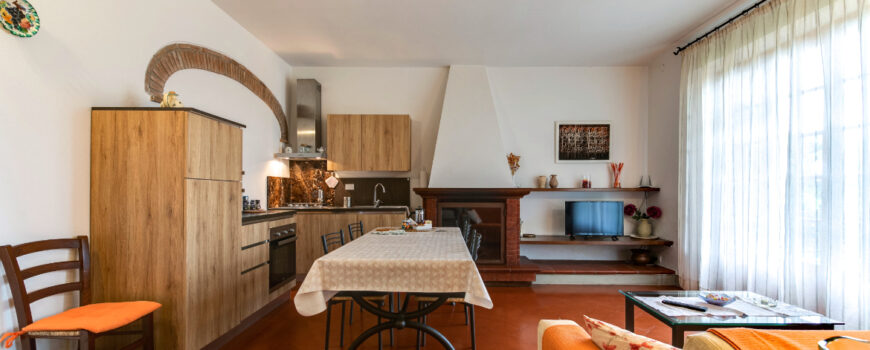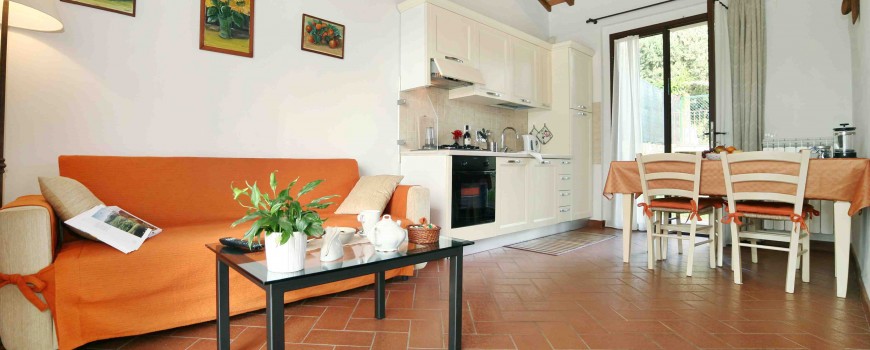 Travelling on the motorway link that leads from Florence to Siena, after passing the diversion for Tavarnelle Val di Pesa, you reach the junction for San Donato in Poggio, a welcoming historical village (23 km from Florence – 35 km from Siena), where you arrive after 5 minutes on the Municipal road to Castellina.
Travelling on the motorway link that leads from Florence to Siena, after passing the diversion for Tavarnelle Val di Pesa, you reach the junction for San Donato in Poggio, a welcoming historical village (23 km from Florence – 35 km from Siena), where you arrive after 5 minutes on the Municipal road to Castellina.
San Donato in Poggio is located at an altitude of approx. 400m, on one of the most delightful hill in the heart of Chianti, a well-known region for its good wine and olive oil, but also for the simplicity and friendliness of its inhabitants as well as for its abundant fauna.
San Donato in Poggio has Roman origins: a castrum militare
to defend the Cassia consular Roman road, that started in Siena
on the ridge of the hills and passed through the Pesa valley. In the 14th century the soldiers of the garrison, who were Christians
from Arezzo devoted to their holy bishop, named their fortress “San Donato”. In the Middle Ages it was called San Donato in loco poci, later San Donato in podio and finally San Donato in Poggio.
San Donato in Poggio is now part of the municipality of Tavarnelle Val di Pesa (since 1895), but it was an independent town until 1774. The castle of San Donato, like the one at Tignano and that of Barberino Val d’Elsa, formed an almost impassable Florentine offensive and defensive barrier.
 The boundary walls of the ancient fortress are very well preserved, as are the Guard Tower (Torrino) and the little alleys inside the castle (via dei Baluardi, via dei Fossi) onto which the houses built on to the walls open up.
The boundary walls of the ancient fortress are very well preserved, as are the Guard Tower (Torrino) and the little alleys inside the castle (via dei Baluardi, via dei Fossi) onto which the houses built on to the walls open up.
San Donato in Poggio deserves attention as you can almost imagine the epic battles once fought in the surroundings countryside, between the lords of Florence and those of Siena. Here at San Donato, the Florentine men at arms concentrated in attacking the Siena troops, and it was exactly here that the Florentine soldiers joined forces for the Battle of Montaperti (1260) mentioned by Dante Alighieri in the Divine Comedy. San Donato is remembered for having been chosen twice (in 1176 and in 1265) as the place where peace treaties were signed between the two rival Republics of Florence and Siena.
Today, however, everything inspires feelings of peace and serenity. ThePorta Fiorentina (Florentine Gate), the marvellous Romanesque church, the Santuario della Madonna di Pietracupa, the Chiesa della Compagnia and the surrounding landscape make this village truly well worth seeing.
The Romanesque parish church (Pieve), with three aisles and three apses, was built outside the boundary walls and dates to about the year 1000. In the church a lot of artistic treasures are kept, such as the baptistery made by Giovanni della Robbia (1513) and a crucifix by the Giotto School, ascribed to Taddeo Gaddi. In the inner part of the castle, the Malaspina Square, with its octagonal well, is surrounded by the Magisterial Palace and the suggestive Malaspina Palace, which has been recently renovated and it currently hosts interesting artistic and cultural events.
By clicking on the image below you will be redirected to the Fine Arts website, where you can discover additional itineraries and attractions in the Municipality of Barberino Tavarnelle.
 La Compagnia del Chianti
La Compagnia del Chianti






